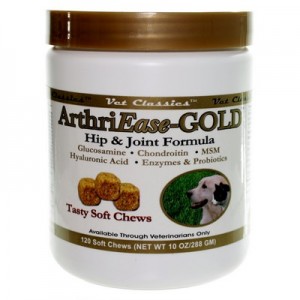Most cats experience symptoms of renal deficiency later in their lives. The chronic or sudden condition occurs when the kidneys can no longer remove waste products from the blood. When these toxins accrete, the buildup can cause uremic poisoning, which is a leading cause of death in domesticated cats.
Causes of Renal Failure in Cats
Sudden renal failure is often the result of a blockage in the lower urinary tract or a bladder defect, most of which are congenital. An injury such as a pelvic fracture or trauma to the abdomen can also cause kidney problems. Rapid dehydration due to shock is another common explanation. And when blood flow to the kidneys is reduced due to heart failure, your feline friend may experience signs of renal failure. Lastly, poisoning, especially from imbibing antifreeze, can result in kidney problems.
There are three main differences between the chronic and sudden forms of the disease: the former takes several years to develop, almost always involves older cats, and can be managed with the right prescription medications. The most common cause of chronic renal problems in cats is nephritis, which is a failure of the renal tubules. Infectious diseases such as feline peritonitis and leukemia are also culprits.
Symptoms of Renal Failure in Cats
Feline renal failure could accurately be described as a silent killer, since cats do not begin to show signs of the disease until irreparable damage has been done. Symptoms of uremic poisoning, for example, are not normally reported until about seventy percent of the cat’s nephrons (the filtering units in their kidneys) have been destroyed.
One of the first and most common symptoms of feline renal failure is an increase in micturition. Even cats that have been be housebroken for decades may urinate on the rug if they have kidney problems. It is not their fault, of course, since the malfunctioning organs rob them of control. Because they are no longer able to conserve water, your feline friend may visit his litter box several times each day. And when the box begins to stink, he may be forced to relieve himself outside of it.
The increase in urination is a result of increased fluid intake, which is caused by the inability of the kidneys to literally hold their water. Bacterial infections are also far more common in cats with renal failure because the vital organs are not doing their job, i.e., removing waste from the bloodstream.
As the disease inevitably advances and renal function deteriorates, your cat will retain dangerous amounts of waste products, such as nitrogen, acids, and ammonia. This may lead to uremic poisoning, which can be fatal. Other symptoms of the disease include sluggishness, loss of appetite and consequently weight, oral ulcers, a dry and/or dull coat, and malodorous breath. At the last stages, the patient may experience anemia, diarrhea, vomiting, and gastrointestinal bleeding.
Diagnosis of Renal Failure in Cats
Veterinarians utilize a number of effective techniques and tests to determine whether or not your cat’s kidneys are failing, including X-rays, ultrasound, bloodwork, and urinalysis. Although there is no cure for either the chronic or sudden form of the disease, early detection and treatment can slow the progression of renal failure and extend your pet’s life by several years. Let us take a moment to discuss two of the most popular prescription medications for feline kidney failure.
 Lactated Ringer’s Solution: Also known as subcutaneous fluids or sub-Qs, Lactated Ringer’s solution are fluids administered under the cat’s skin, i.e., with a needle and IV line. As unpleasant as the process is for most pet owners, it is absolutely necessary, since it helps provide hydration after blood flow through the kidneys is reduced. Without it, your pet may vomit frequently, suffer from diarrhea, and even stop drinking. It is important to note that sub-Qs won’t cure damaged kidneys, but they can help your pet get the most out of the remaining healthy kidney tissue.
Lactated Ringer’s Solution: Also known as subcutaneous fluids or sub-Qs, Lactated Ringer’s solution are fluids administered under the cat’s skin, i.e., with a needle and IV line. As unpleasant as the process is for most pet owners, it is absolutely necessary, since it helps provide hydration after blood flow through the kidneys is reduced. Without it, your pet may vomit frequently, suffer from diarrhea, and even stop drinking. It is important to note that sub-Qs won’t cure damaged kidneys, but they can help your pet get the most out of the remaining healthy kidney tissue.
Most cats respond positively to the treatment and experience few side effects. More often than not, they feel better after hydration and can survive for several additional years, which is why it is the most popular treatment for both forms of the disease. The only cats that cannot safely take sub-Qs are those with serious or chronic heart problems. Extra fluids can put additional pressure on their already compromised systems and may lead to sudden expiration.
 Rebound OES: No matter how much your cat drinks, he/she may still experience symptoms of dehydration if the kidneys are failing. Rebound is an effective and easy-to-use electrolyte and fluid replacer administered in liquid form. Formulated by veterinarians and feline nutritionists, it helps combat the symptoms of dehydration that are associated with renal failure, abdominal trauma, surgery, and gastrointestinal disorders.
Rebound OES: No matter how much your cat drinks, he/she may still experience symptoms of dehydration if the kidneys are failing. Rebound is an effective and easy-to-use electrolyte and fluid replacer administered in liquid form. Formulated by veterinarians and feline nutritionists, it helps combat the symptoms of dehydration that are associated with renal failure, abdominal trauma, surgery, and gastrointestinal disorders.

















